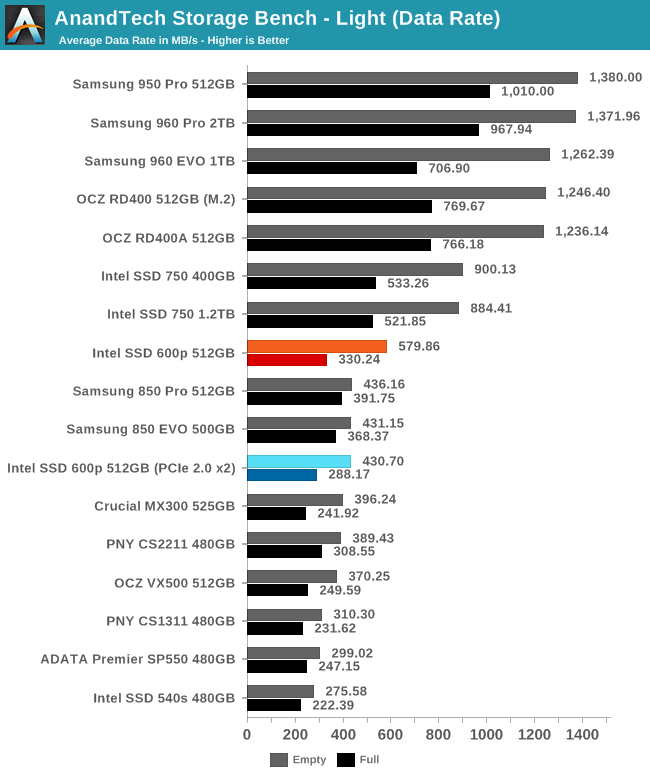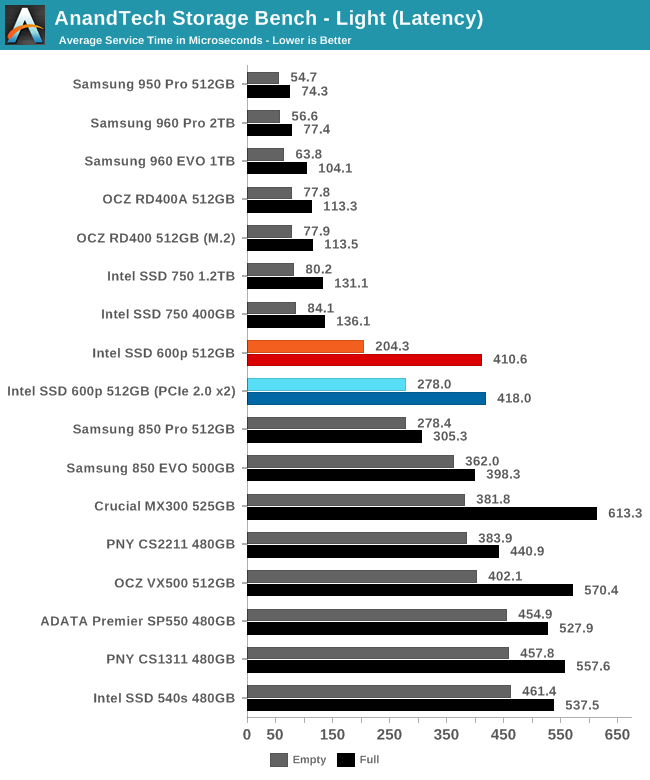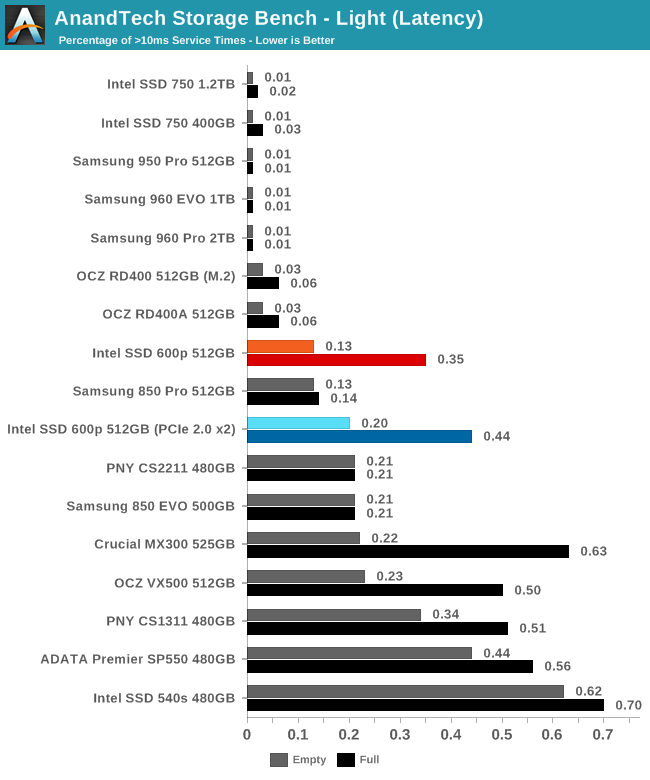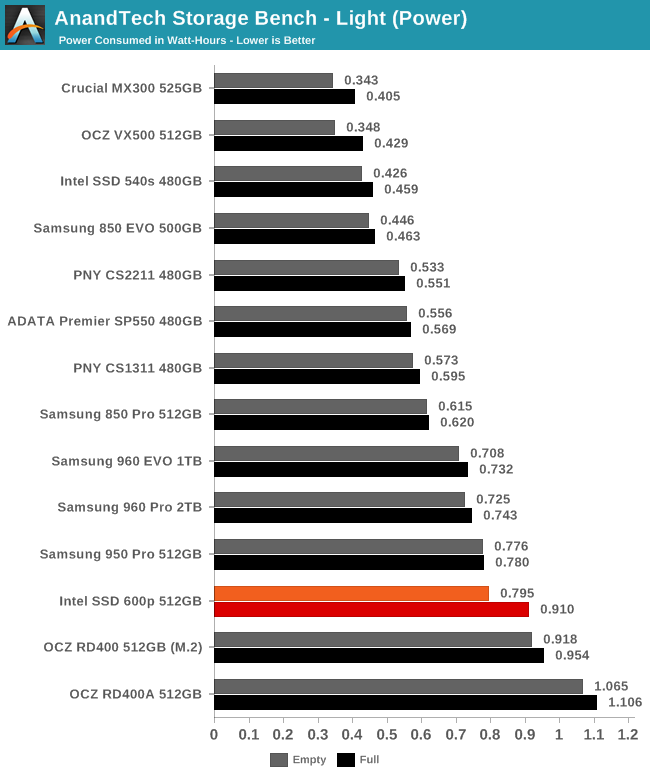The Intel SSD 600p (512GB) Review
by Billy Tallis on November 22, 2016 10:30 AM ESTAnandTech Storage Bench - Light
Our Light storage test has relatively more sequential accesses and lower queue depths than The Destroyer or the Heavy test, and it's by far the shortest test overall. It's based largely on applications that aren't highly dependent on storage performance, so this is a test more of application launch times and file load times. This test can be seen as the sum of all the little delays in daily usage, but with the idle times trimmed to 25ms it takes less than half an hour to run. Details of the Light test can be found here.

On the Light test we finally see the 600p pull ahead of SATA SSDs, albeit not when the drive is full. This test shows what the 600p can do before it gets overwhelmed by sustained writes, and it's also the first time where the PCIe 2.0 x2 connection is a significant bottleneck.

The average service times of the 600p rank about where the should: worse than the other NVMe SSDs, but also better than the SATA drives can manage. When the 600p is full its latency is significantly worse and isn't quite as good as Samsung's SATA SSDs, but it is nothing to complain about.

Aside from the usual caveat that it suffers acutely when full, the 600p meets expectations for the number of latency outliers.

The 600p manages to pull ahead of the OCZ RD400 in power consumption and is close to Samsung's NVMe SSDs in efficiency, but the SATA drives are all significantly more efficient.










63 Comments
View All Comments
ramvalleru - Tuesday, December 6, 2016 - link
What advantages does Intel 600p has over Samsung 850 Evo with its 4 x pci-e. Less bottleneck with multi application writes and reads?KAlmquist - Friday, December 9, 2016 - link
If you mean compared to the 960 EVO, the 600p is less expensive. Also, with the 600p you are getting the Intel brand name and quality control, backed up with a 5 year warranty vs. a 3 year warranty on the 960 EVO.RetsamCP - Saturday, December 24, 2016 - link
I may just be a little confused but how did the 960 Pro 2TB bench and average service time latency of 160.9 ms in the Destroyer bench but score 0 for percentage of service times >100 ms?There had to be service times over 100 ms for the average to be over 100 ms, but how was the average affected so much when service times >100 ms made up <0.01% of the total benchmark?
What am I missing?